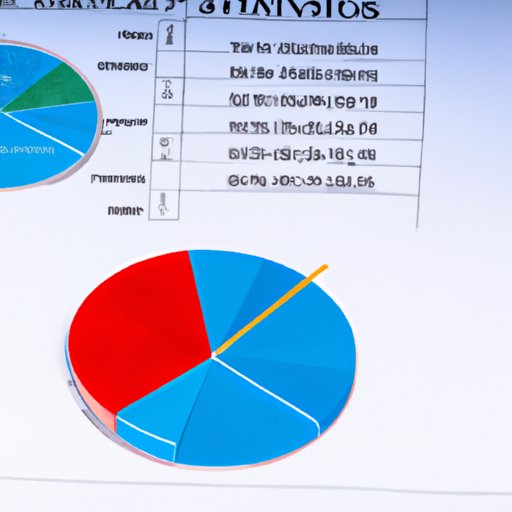
Introduction
Have you ever wondered how to find the middle value of a data set? This important statistic is called the median, and it’s a crucial way of understanding and analyzing data. Whether you’re in the field of statistics or simply want to better understand how to calculate an average, learning how to calculate the median is essential. In this article, we’ll explore what the median is, how to calculate it, and why it’s important.
“A Beginner’s Guide to Calculating the Median: Step-by-Step Instructions”
The median is a measure of central tendency that represents the middle value in a data set. While similar to the mean and mode, the median has unique properties that make it useful in many different applications. For instance, the median is less sensitive to extreme values than the mean, making it particularly useful for skewed data sets.
Let’s consider a basic example of a data set and work through the steps of finding the median:
data set: 2, 4, 9, 12, 16
To find the median, start by putting the values in order from lowest to highest:
2, 4, 9, 12, 16
Next, determine which value in the data set falls in the middle. In this case, it’s 9. Therefore, the median of this data set is 9.
While finding the median is a relatively simple process, there are some common mistakes to avoid. One common mistake is forgetting to order the values before finding the middle value. It’s also important to note that if the data set has an even number of values, the median is the average of the two middle values.
“Unlocking the Power of the Median: How to Calculate Invaluable Averages for Statistics and Beyond”
The median is an important measure of central tendency in statistics. It is particularly useful for data sets that have outliers or are skewed, as it is not affected by extreme values in the same way that the mean is. For example, if a data set includes a few extremely high or low values, the mean may not be a reliable measure of central tendency. However, the median would not be affected in the same way.
In real-world applications, the median is commonly used in a variety of fields, including finance and economics. For instance, the median income of a population is often used to understand the earning distribution and economic well-being. The median is also used in healthcare and medical research to represent the typical value of a variable for a particular population.
It’s important to note that the median can be used in conjunction with other measures of central tendency, such as the mean, mode, and range, to provide a more complete understanding of a data set.
“Math Made Easy: Simplifying the Calculation of the Median”
There are different ways to calculate the median, depending on the type of data set and the available resources. One method is to manually find the middle value, as we did in the example above. However, for larger data sets, this method can become complicated and time-consuming.
Luckily, there are digital methods available that can simplify the process. Many spreadsheet programs, such as Microsoft Excel, have built-in functions that can calculate the median for you. All you need to do is input the data set and the program will do the rest.
To make the process even more efficient, there are several shortcuts and tricks for finding the median. For instance, if the data set has an odd number of values, you can simply count to the middle value instead of ordering the values. Additionally, you can group the data set into smaller sections to make the process more manageable.
“From Data Set to Median: Mastering the Art of Averaging”
Different types of data require different types of averaging. While the median is useful for skewed data sets, it may not be the best measure of central tendency for some types of data. For example, if the data set is normally distributed, the mean may be a more appropriate measure of central tendency.
However, there are situations where the median is the best choice, even for normally distributed data sets. For instance, if the data set includes extreme values that skew the distribution, the median may provide a more accurate representation of the data.
If you’re faced with a particularly complex data set, finding the median can be challenging. In these cases, it may be useful to break the data set into smaller sections or seek the help of a professional statistician.
“Calculating the Median: Why It’s Important and How to Do It Right”
To recap, the median is a crucial measure of central tendency that represents the middle value in a data set. It differs from the mean and mode in its properties and applications. The median is important in statistics and analysis, particularly for skewed data sets and those with extreme values.
It’s important to calculate the median correctly to ensure accurate representation of the data. Avoid common mistakes, such as forgetting to order the values, and consider using digital methods or shortcuts to make the process more efficient. Additionally, choosing the appropriate measure of central tendency based on the nature of the data is critical to obtaining accurate and meaningful results.
For those who want to learn more about how to calculate the median and its applications, there are many additional resources available. From online tutorials to professional statisticians, the key is to understand the principles behind the calculation and the context in which it is used.
Conclusion
Whether you’re working in statistics or simply looking to better understand how to calculate averages, understanding the median is essential. With its unique properties and applications, the median is a powerful tool for analyzing and interpreting data. By following the step-by-step instructions and tips provided in this article, you can master the art of calculating the median and unlock the power of averaging for statistics and beyond.




